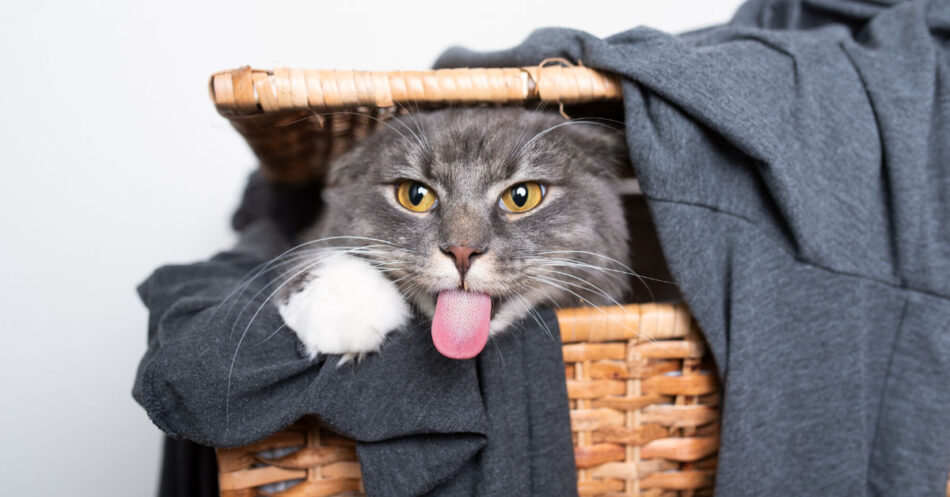
The Right Way to Get Cat Pee Smell Out of Clothes and Linens
This post may include affiliate links. Please read my disclosure policy.
This article will explain how to get cat pee smell out of clothes, plus:
- How to properly use enzyme cleaners.
- Why cat pee smells so bad.
- When to see your veterinarian about your cat peeing outside the litter box.
Read time: 4 minutes
The mere mention of the words “cat pee smell” and you can probably already get a whiff of it. When my cat, Olivia, started peeing outside of her litter box and on my expensive bath mat, I was frustrated, to say the least.
This wasn’t the first time she had an “accident” on something of value. She had even peed on one of Paul’s shirts before!
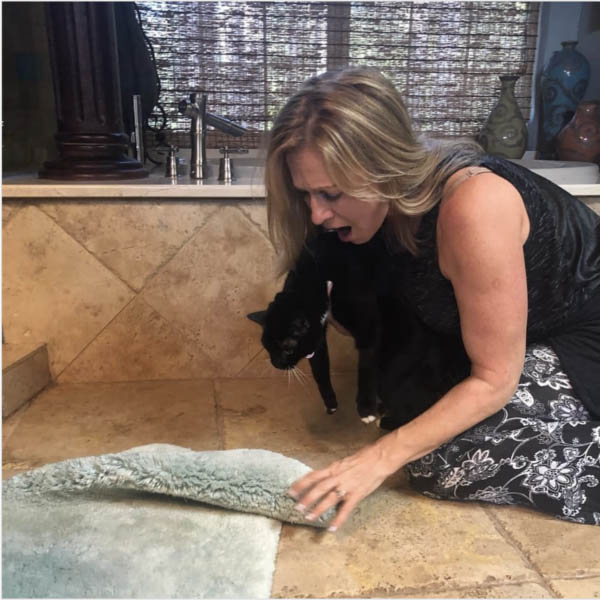
I laundered them, but she would return to the scene of the crime for a repeat offense, which made me think the cat urine smells and stains weren’t being cleaned properly.
These were the kinds of experiences that led me to investigate how enzyme cleaners really work. Guess what? We’re not using them correctly!
Read on as I share what I learned and what you should do to eliminate any cat urine smell in your clothes and other washables.
Pin me!
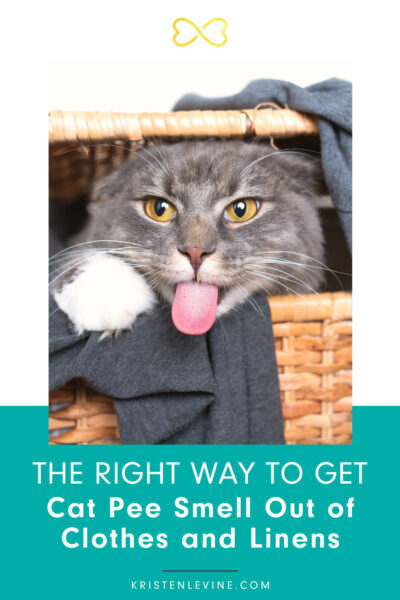
How to Get Cat Pee Smell Out of Clothes in 4 Steps
Here are four simple steps to remove cat urine odor and stains.
Step 1: Soak it Up
First, soak up as much urine as you can with a paper towel. The fewer urine stains you have to manage, the better!
Cat urine, like any liquid, will spread and seep deeper into clothing fibers over time. The longer it sits, the more it saturates and the larger the affected area, making the cleaning task more complicated.
The crystals in the urine are the primary source of lingering odor, which can be intensified if not treated promptly. Minimize the damage by drying the clothes with a paper towel right away.
Step 2: Pretreat the Spot
Here’s where it gets super important to follow the instructions carefully. Cat urine has an odor-causing bacteria. So, you need to use an enzyme cleaner like this one. But the number one mistake we’re all making when using enzyme cleaners is to spray and wipe away. That’s not how they work!
An enzyme cleaner contains compounds that eliminate pet urine odor. This is a biological process and needs time to work. So when your cat pees on your clothes or linens, use your enzyme cleaner and saturate the area, going just beyond the borders of the pee spot.
That’s why I prefer a cleaner with a squirt top rather than a spray top (though this one comes with both). It’s much easier to penetrate the stain.
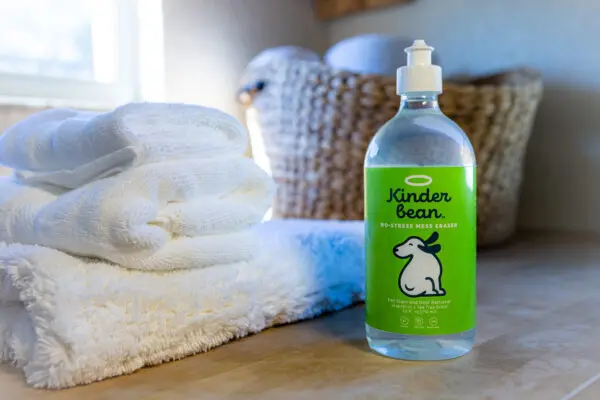
After you’ve saturated the area, let it sit overnight, if possible. This allows the enzyme cleaner time to eat the bacteria that cause odors from cat urine.
Step 3: Launder the Clothes or Linens
Now that much of the pee is soaked and enzyme cleaner has been left to work magic, it’s time to do the laundry!
Most common laundry detergent brands may not be able to remove both the stain and smell of pet pee. You can throw the garment in your regular wash cycle, but be sure to add about a 1/4 cup of enzyme cleaner, like Kinderbean No Stress Mess Eraser, to your detergent dispenser along with your laundry detergent. This last bit will help freshen the whole garment or linen. Try not to use warm or hot water as well, as this might set the cat urine smell in.
You can dry as usual, per the garment’s instructions, but I recommend you air-dry urine-stained items or clothes.
You may need to repeat the process for powerful cat urine odors, but typically one cycle will do it.

Step 4: Make Sure the Surrounding Area Is Clean
When Olivia messed on my bathmat, it wasn’t enough to wash the mat. I also needed to follow a similar procedure for the floor surrounding it. So if your cat peed on your shirt but was on your carpet or mattress, you’ll need to clean that area too.
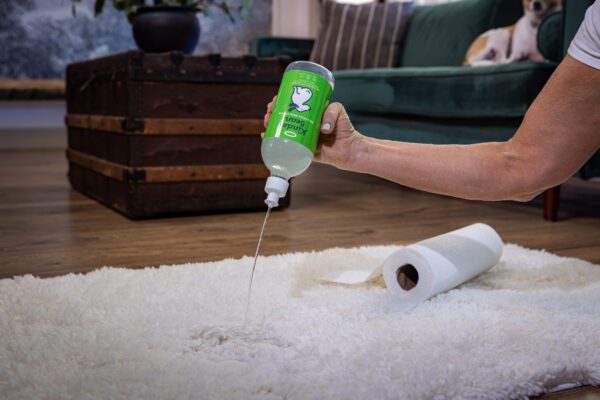
The process is pretty much the same, except you’ll skip the laundry cycle.
- Soak up any pee on the surface of any urine-stained items.
- Saturate the area thoroughly with an enzyme cleaner.
- Gently agitate the surface (if soft) using the bottom of the cleanser bottle, working the product into all the nooks and crannies.
- Set a clean white rag on top of the spot.
- Let it sit overnight (12–24 hours is best).
- Remove the cloth.
- Let it air-dry.
Once I learned about this process, I was shocked by its simplicity and effectiveness when I followed it! Yet cat pee smell is still notoriously difficult to get rid of. And with good reason, cat pee does smell worse than many other messes.
Why Does Cat Pee Smell So Bad?
Cat pee smell resembles skunk smell, which is incredibly strong. Since cats don’t drink as much as dogs they don’t pee as much. That is why cat pee is very concentrated. They’re very effective at using and holding their water!
But this means it contains concentrated amounts of urea, pheromones, and other bacteria. When the cat pees, the bacteria begin to break down urea, and it emits ammonia, which smells very strong.
Why Is Cat Urine Odor Hard to Get Rid Of?
Understanding why it’s such a challenge to eliminate the smell of cat pee requires diving into its potent chemical makeup. Feline urine is high in a chemical substance known as trimethylamine, which is the by-product of urea, a waste substance that cats excrete during protein metabolism.
This chemical gives cat urine its strong, ammonia-like scent. Additionally, the smell can intensify due to various factors. For instance, if a cat’s urine is highly concentrated due to dehydration, it the smell will be more intense. Or if they suffer from a urinary tract infection, they may urinate more frequently resulting in a harsher odor.
Cat pee smell is also notoriously difficult to remove due to two compounds: uric acid and pheromones. Uric acid forms alkaline salts that show resistance to most common cleaners, making the removal process quite tricky. Additionally, feline urine contains distinctive pheromones as a means for cats to communicate and mark territory.
The scent of cat urine, powered by uric acid, is not only intensely strong, but it also has a way of deeply embedding itself into porous surfaces like carpets, fabrics, and even wood. Once it permeates these materials, removing it can become a complex task.
Enzymatic cleaners are crucial to completely dissolve these substances, enabling a thorough cleaning process. Although home remedies like baking soda and vinegar are popular, they don’t completely neutralize these stubborn compounds or eliminate pee stains. If you want to learn more about how to get the cat pee smell out of other household surfaces, check out our other guide on how to get rid of that cat pee smell for good.
Can You Use Heat to Remove Cat Urine Smell?
No, using heat to dispel cat urine odor is not advisable. In fact, it could amplify the problem. The ammonia in cat urine can evaporate due to heat. For example, using a steamer could release more ammonia into the air, intensifying the odor and potentially causing irritation to your eyes and nose.
Heat also has the unwanted effect of setting both the stain and the odor. The high temperature from steamers can cause the proteins in the cat urine to bond more strongly to the fabric, making the odor harder, if not impossible, to remove.
Turning to enzymatic cleaners can be a game-changer. These cleaners are explicitly engineered to break down the tricky compounds, such as uric acid, that cause the persistent odor. Importantly, they are often safe to use on many surfaces like carpets, fabrics, and wood, making your deodorizing process much more manageable and nose-friendly.
When to See Your Veterinarian About Your Cat’s Peeing Outside the Litter Box
According to Cornell University, there are some medical reasons why your cat might be peeing outside the litter box and on your clothes. These include diabetes, kidney disease, and urinary tract infections. If your cat has pees occasionally out of his litter box, it’s likely nothing to worry about.
But if your cat is a re-pee-t offender, it’s essential to rule out medical issues. If your veterinarian gives your cat a clean bill of health, it’s time to investigate your cat’s litter box preferences.
According to Dr. Liz Bales, cats have particular demands regarding their litter box needs. For example, Dr. Bales recommends “one box for every cat, plus one.” So if you have two cats, you’ll need multiple litter boxes, at the very least three. Regularly maintain your cat’s litter box by keeping them clean and well-ventilated and replacing them weekly. You don’t want to go on a dirty toilet—so your cat won’t use a dirty litter box either!
You can learn more about these litter box secrets in my interview with Dr. Bales.

Enjoy Pee-Free and Fresh-Smelling Clothes
Eliminating cat urine stains and smells from clothes requires immediate action. The sooner you clean the urine and saturate the piece of clothing with an enzyme cleaner, the better chance you have of completely getting rid of the scent. Remember, while dealing with cat urine odor is challenging, it’s not an insurmountable task with the right steps and a trusty enzyme cleaner or two.


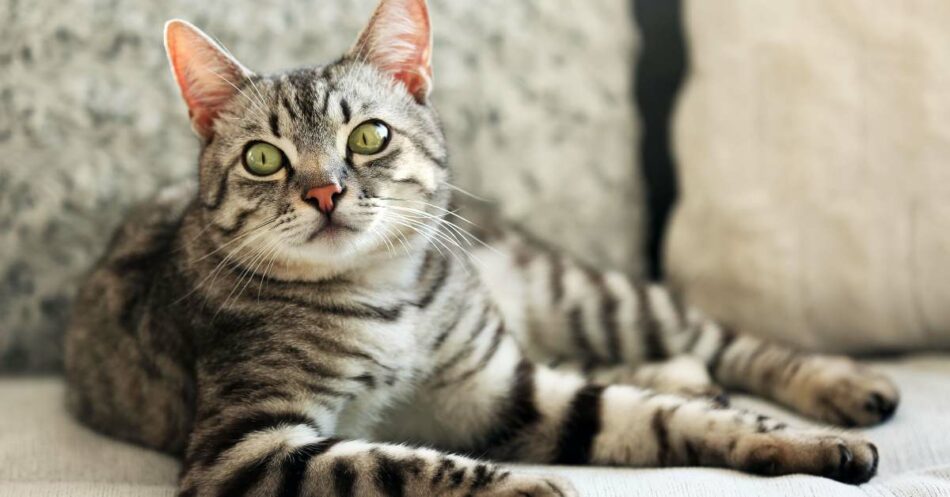
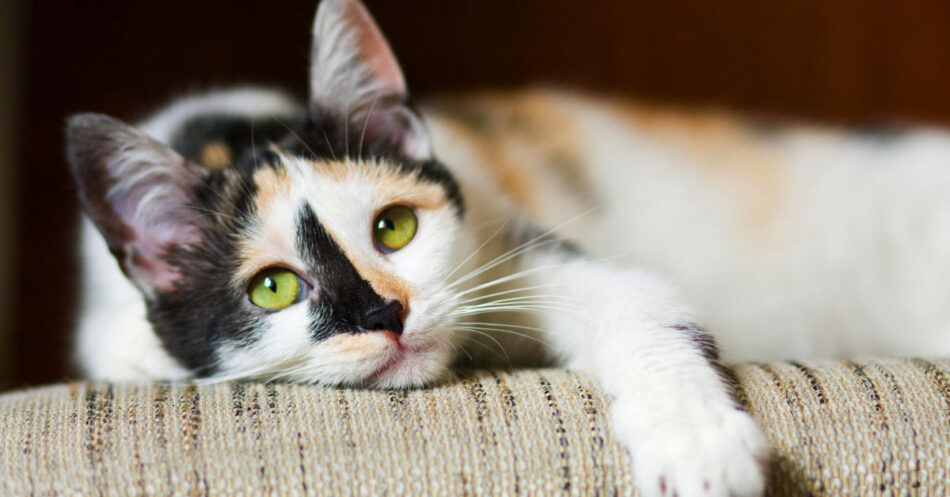
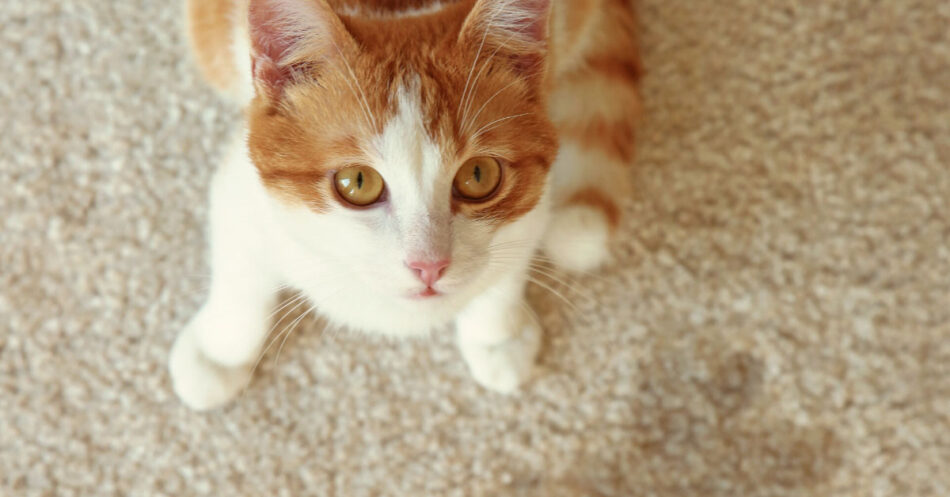
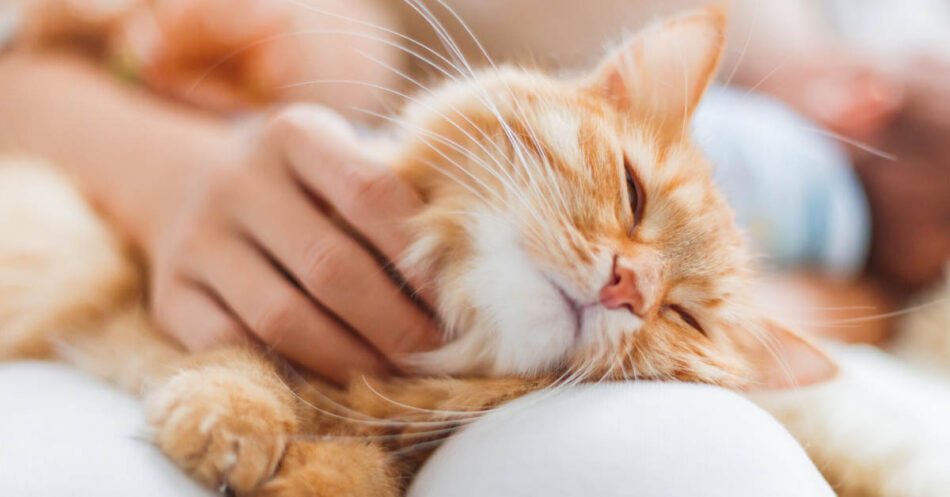
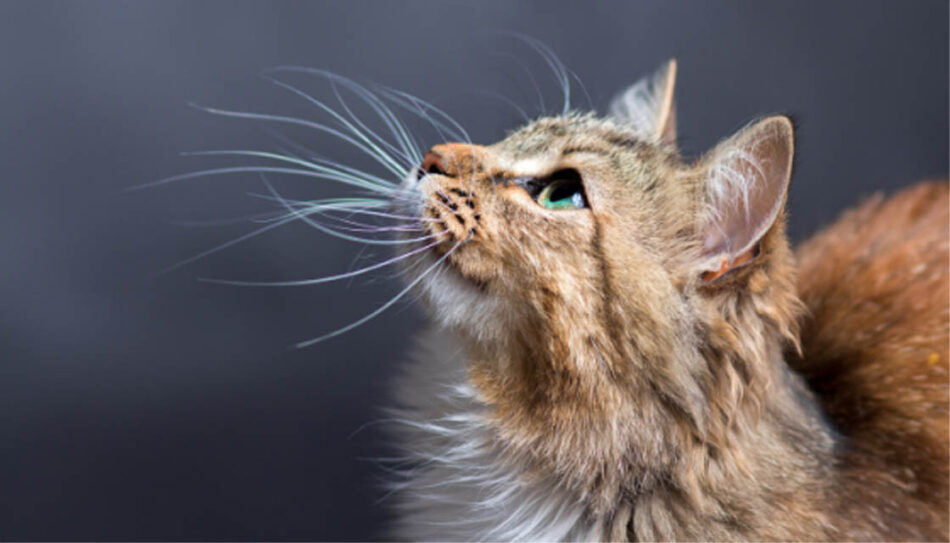
Comments (0)